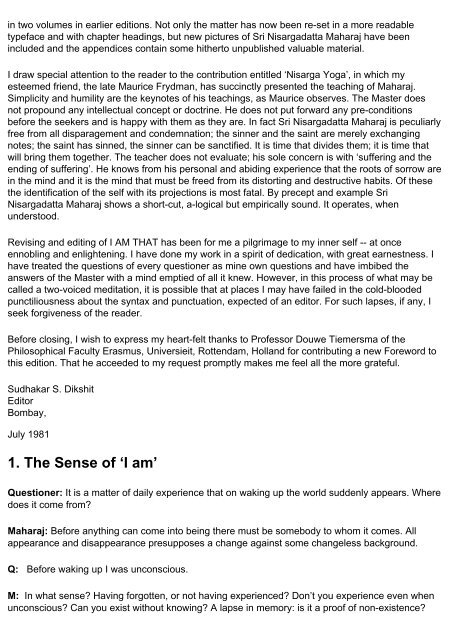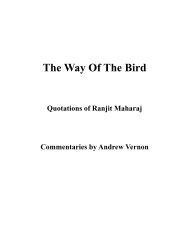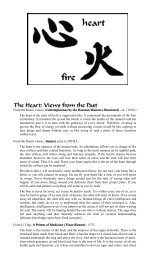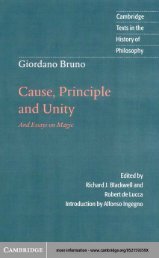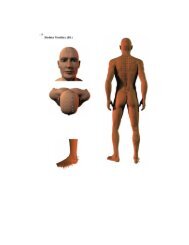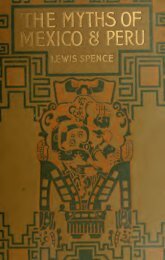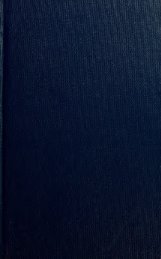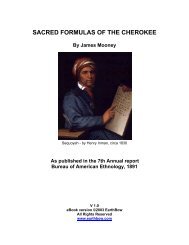- Page 1 and 2: I AM THAT Dialogues of Sri Nisargad
- Page 3 and 4: 32. Life is the Supreme Guru 33. Ev
- Page 5 and 6: happens spontaneously, without inte
- Page 7: vastness and variety of the Indian
- Page 11 and 12: M: Who can say? It happened so. Thi
- Page 13 and 14: M: Desire is the memory of pleasure
- Page 15 and 16: M: Causality, even as a concept, do
- Page 17 and 18: understand its causes and its worki
- Page 19 and 20: Q: Are you not immersed timelessly
- Page 21 and 22: Q: If my real self is peace and lov
- Page 23 and 24: Q: I was born, I shall die. M: Can
- Page 25 and 26: Q: Still, memory is there to prove
- Page 27 and 28: Q: What does it mean to know myself
- Page 29 and 30: M: Of course. Q: What are your drea
- Page 31 and 32: You may not be quite conscious of y
- Page 33 and 34: mind is flooded with light. The ope
- Page 35 and 36: Identity remains, but identity is n
- Page 37 and 38: Q: I am not enquiring about the cau
- Page 39 and 40: M: You are confused, because you be
- Page 41 and 42: M: That's what you say! Did God com
- Page 43 and 44: Q: Is all imaginable unreal? M: Ima
- Page 45 and 46: Before desiring, deserve. Q: I am e
- Page 47 and 48: M: It helps you to understand what
- Page 49 and 50: temporary event are two different a
- Page 51 and 52: M: You have said just now: 'I am, b
- Page 53 and 54: Q: I am what I know myself to be. M
- Page 55 and 56: negation. Q: How can I see the worl
- Page 57 and 58: Q: I can now understand that I am n
- Page 59 and 60:
M: They are not the same and pain i
- Page 61 and 62:
Q: It takes time to know oneself. M
- Page 63 and 64:
Q: We talk of divine virtue. M: Tru
- Page 65 and 66:
Q: Still the outer helps. M: How mu
- Page 67 and 68:
Q: Why should he answer so? M: Beca
- Page 69 and 70:
M: You should consider more closely
- Page 71 and 72:
Q: Why should pleasure be the seed
- Page 73 and 74:
est and apparent darkness, when the
- Page 75 and 76:
Q: Isn't God a person? M: As long a
- Page 77 and 78:
Questioner: Are you ever glad or sa
- Page 79 and 80:
M: As bad as to remember oneself co
- Page 81 and 82:
M: How can it be? Aren't they contr
- Page 83 and 84:
M: A life lived thoughtfully, in fu
- Page 85 and 86:
M: In memory. Even then, what is re
- Page 87 and 88:
Q: Can't they co-exist, as the tumu
- Page 89 and 90:
M: That is what you are told. Is it
- Page 91 and 92:
M: Because the element of happiness
- Page 93 and 94:
Questioner: What does it mean to fa
- Page 95 and 96:
M: Their destiny is what happens. T
- Page 97 and 98:
M: Wherever it leads you, it will b
- Page 99 and 100:
Q: But what can I do here and now?
- Page 101 and 102:
M: There is absolutely no differenc
- Page 103 and 104:
accordance with the true nature of
- Page 105 and 106:
Q: Nature kills by the millions, bu
- Page 107 and 108:
know your true nature, you must hav
- Page 109 and 110:
states of the mind and their conten
- Page 111 and 112:
M: Why talk like this? Such express
- Page 113 and 114:
M: His case is registered in consci
- Page 115 and 116:
Q: It gave me good health and a mea
- Page 117 and 118:
you expect to find? Q: The true kno
- Page 119 and 120:
Q: I am not talking of pleasing, bu
- Page 121 and 122:
confidence are strong, they will op
- Page 123 and 124:
M: Only in matters pertaining to th
- Page 125 and 126:
M: It is all right. When there is t
- Page 127 and 128:
Q: Sri Ramana Maharshi died. What d
- Page 129 and 130:
Q: It is pain that is at the root o
- Page 131 and 132:
Q: It does not make me aware. M: Wa
- Page 133 and 134:
You tend to say: "This is real. Tha
- Page 135 and 136:
can be lived. Maharaj: The experien
- Page 137 and 138:
what I am willing to give? Q: You s
- Page 139 and 140:
Q: Not everybody has the chance of
- Page 141 and 142:
eflection only in the focus of cons
- Page 143 and 144:
with. Q: This world is so rich and
- Page 145 and 146:
notice is taken. The mind is a form
- Page 147 and 148:
so on. But to me the entire commoti
- Page 149 and 150:
M: The causes of perversity are als
- Page 151 and 152:
you are their slave. By imagining t
- Page 153 and 154:
troubles me. I offer no resistance
- Page 155 and 156:
M: When you are hurt, you cry. Why?
- Page 157 and 158:
un, never still, never fully reflec
- Page 159 and 160:
that it is due to the habit of taki
- Page 161 and 162:
these defines the person. You think
- Page 163 and 164:
child of chaos. To find order you m
- Page 165 and 166:
Q: I guess it does not. But I have
- Page 167 and 168:
M: If you are earnest, you don't ne
- Page 169 and 170:
Q: Is there a way for me to speed u
- Page 171 and 172:
M: You can observe the observation,
- Page 173 and 174:
Q: As you talk to us just now, are
- Page 175 and 176:
Q: What is meditation and what are
- Page 177 and 178:
enormous good. If they ask you what
- Page 179 and 180:
accidental when its causes are untr
- Page 181 and 182:
the space as ruined or intact? It i
- Page 183 and 184:
Q: If it is not the natural, or nor
- Page 185 and 186:
explosion will set it right. You ha
- Page 187 and 188:
me she resisted, any attempt to go
- Page 189 and 190:
53. Desires Fulfilled, Breed More D
- Page 191 and 192:
Q: I have been barren for the last
- Page 193 and 194:
As to method, there is only one --
- Page 195 and 196:
M: A prince who believes himself to
- Page 197 and 198:
dream and I know that you must wake
- Page 199 and 200:
Questioner: When an ordinary man di
- Page 201 and 202:
covers up the world as it is, with
- Page 203 and 204:
Maharaj: There is not much differen
- Page 205 and 206:
change. Pain is essential for the s
- Page 207 and 208:
Q: Does the Guru then dismiss, or d
- Page 209 and 210:
Of course, not every activity of ma
- Page 211 and 212:
M: When more people come to know th
- Page 213 and 214:
M: There is no wall, because there
- Page 215 and 216:
consciousness Itself. You are the s
- Page 217 and 218:
childhood. She was badly mutilated
- Page 219 and 220:
62. In the Supreme the Witness Appe
- Page 221 and 222:
Q: Do you mean to say you are quite
- Page 223 and 224:
There was not much of thinking or s
- Page 225 and 226:
very fortunate to be brought here.
- Page 227 and 228:
Q: But who creates the world? M: Th
- Page 229 and 230:
Q: Must we not suffer to grow? M: I
- Page 231 and 232:
M: They don't. The sense of identit
- Page 233 and 234:
66. All Search for Happiness is Mis
- Page 235 and 236:
M: To what purpose? Q: In order to
- Page 237 and 238:
Q: University education is most use
- Page 239 and 240:
need no bread. You need cessation,
- Page 241 and 242:
will accept the conditions and some
- Page 243 and 244:
all. Two people talk to each other
- Page 245 and 246:
Q: No, I cannot. M: How do you know
- Page 247 and 248:
ack to life? What wakes you up in t
- Page 249 and 250:
Q: You mean to say that I become Go
- Page 251 and 252:
Q: How can one live without emotion
- Page 253 and 254:
The legitimate function of the mind
- Page 255 and 256:
M: Break the bonds of memory and se
- Page 257 and 258:
Q: Sir, let me first come to know w
- Page 259 and 260:
Q: Must I not use effort to arrest
- Page 261 and 262:
Q: Why do you want to annihilate th
- Page 263 and 264:
Q: Are awareness and love one and t
- Page 265 and 266:
M: Oh no, you are compelled to desi
- Page 267 and 268:
changes in his entire being. It is
- Page 269 and 270:
with flowers, then burnt and the as
- Page 271 and 272:
Maharaj: What about science? Q: Sci
- Page 273 and 274:
the paths take you to the purificat
- Page 275 and 276:
which neither sensory nor the menta
- Page 277 and 278:
M: The outer represent the inner, t
- Page 279 and 280:
Q: When a truth-seeker earnestly pr
- Page 281 and 282:
Q: Why am I so engrossed? M: Becaus
- Page 283 and 284:
law, none compels to suffer. It is
- Page 285 and 286:
M: Have a better look at yourself.
- Page 287 and 288:
Q: There are people whom I love. Mu
- Page 289 and 290:
pencil can draw innumerable picture
- Page 291 and 292:
M: The mind ceased producing events
- Page 293 and 294:
M: Both. It is unreal when we say:
- Page 295 and 296:
died, I lived on. His words proved
- Page 297 and 298:
witnessing dissolves in the Supreme
- Page 299 and 300:
Q: I am the river too. M: Of course
- Page 301 and 302:
them experiences for the lack of a
- Page 303 and 304:
Q: I cannot say. But as a result of
- Page 305 and 306:
Q: What remains when the ‘I am’
- Page 307 and 308:
of saying that wars are inevitable
- Page 309 and 310:
it. Q: But you love everything! M:
- Page 311 and 312:
Q: How can action born from imperfe
- Page 313 and 314:
knowledge is in memory; it is only
- Page 315 and 316:
Accept my words on trust and live a
- Page 317 and 318:
play for a time. They will sober up
- Page 319 and 320:
Q: I have a Guru and I love him ver
- Page 321 and 322:
then realise the self. It is defini
- Page 323 and 324:
M: When the content is viewed witho
- Page 325 and 326:
Questioner: Who is the Guru and who
- Page 327 and 328:
M: I remain conscious, but not cons
- Page 329 and 330:
M: If your motives are pure, if you
- Page 331 and 332:
Q: It may be inferred and yet it is
- Page 333 and 334:
Q: Is the ‘I am’ the Ultimate?
- Page 335 and 336:
M: The catch is in your mind, which
- Page 337 and 338:
what is not true -- which is enough
- Page 339 and 340:
encourage. Q: What am I expected to
- Page 341 and 342:
Ramanashram; now I am on my way bac
- Page 343 and 344:
Q: Must one endure suffering, howev
- Page 345 and 346:
destructive of true happiness. Q: I
- Page 347 and 348:
through to the Yogi my friend’s l
- Page 349 and 350:
power to bring it into the now. Q:
- Page 351 and 352:
Q: I attended one of the group medi
- Page 353 and 354:
Q: But ultimately is there a world,
- Page 355 and 356:
perfection. Everybody loves his bod
- Page 357 and 358:
with happiness. Usually you have to
- Page 359 and 360:
M: The person, the 'I am this body,
- Page 361 and 362:
stop a river. Too many factors are
- Page 363 and 364:
Q: I respond to what you say, but I
- Page 365 and 366:
M: No, this is but an introduction.
- Page 367 and 368:
M: You must find your own way. Unle
- Page 369 and 370:
Q: I cannot make out whether I am t
- Page 371 and 372:
Q: What is right and what is wrong?
- Page 373 and 374:
M: Do you realise that as long as y
- Page 375 and 376:
knowing what your next step should
- Page 377 and 378:
unchangeable, which appears to be a
- Page 379 and 380:
Q: Not at all. The memory of the la
- Page 381 and 382:
a matter of courage, the courage to
- Page 383 and 384:
M: All change affects the mind only
- Page 385 and 386:
Q: If I remain passive, nothing wil
- Page 387 and 388:
Q: I have understood that personali
- Page 389 and 390:
Q: Even at the Moment of death? M:
- Page 391 and 392:
not affected by the availability of
- Page 393 and 394:
atmosphere of timelessness about hi
- Page 395 and 396:
Hinduism comprises numerous sects,


